Der Wiener Prater bietet seinen Besuchern das wohl vielfältigste Freizeitprogramm der Stadt. Im Vergnügungspark und im Praterdome sind Spaß und Action angesagt und im „Grünen Prater“ stehen sportliche Aktivität und Entspannung im Vordergrund.
Der Prater im Zentrum von Wien hat viele Gesichter: Vergnügungspark für Kinder und Junggebliebene, historischer Ort für Nostalgiker, grüne Oase für Erholungssuchende, Treffpunkt für Sportler und Heimat des Riesenrades, dem wohl berühmtesten Wahrzeichen der Stadt. Für Wien-Urlauber ein Muss, denn der facettenreiche Prater zählt zu den Top 10 Sehenswürdigkeiten von Wien.
Inhaltsverzeichnis
BILDER: Prater in Wien
Wann am besten in den Prater?
Die Hauptsaison im Prater ist von März bis Oktober. Während dieser Zeit herrscht Betrieb an alle Stände, Buden, Fahrgeschäfte und Lokalen. Einige, darunter auch das Riesenrad, haben rund ums Jahr geöffnet und machen den Prater zu einem der bedeutendsten Touristenziele Wiens.
Wurstelprater – Vergnügungspark im Wiener Prater
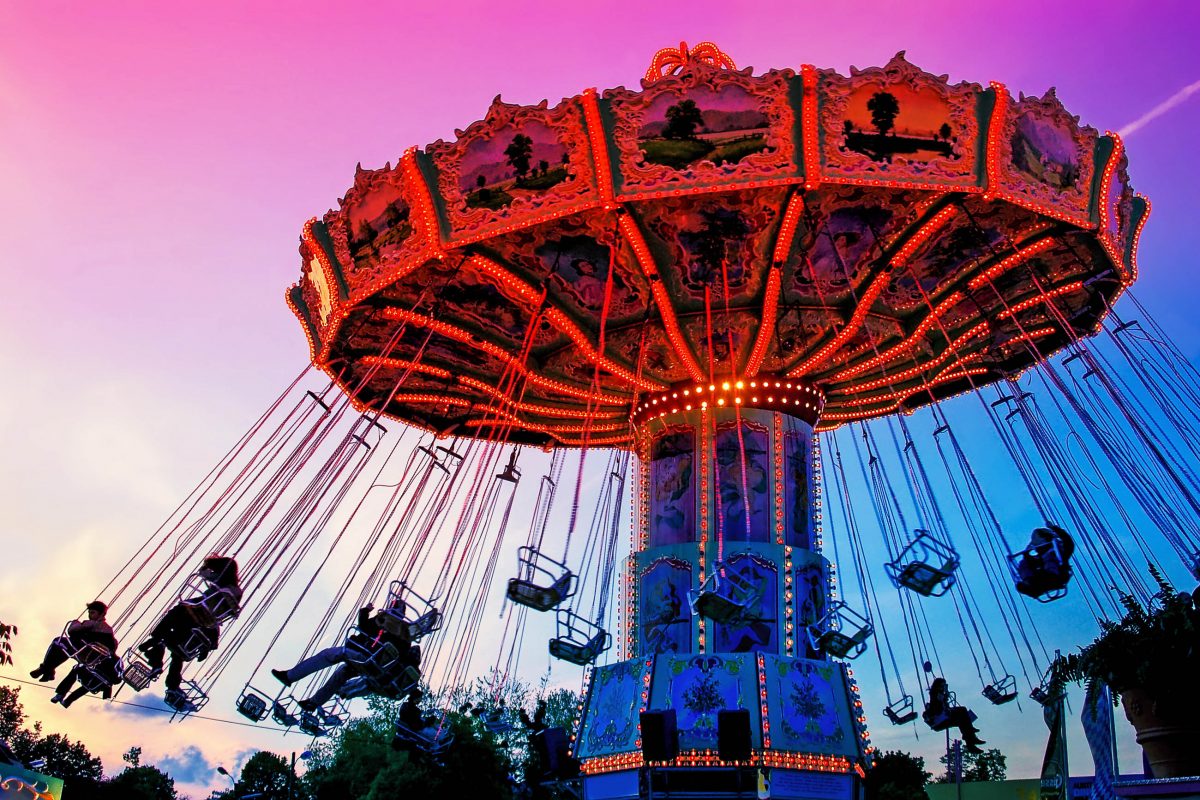
Der Wurstelprater in Wien ist der größte Erlebnispark Österreichs. Gleich am idyllischen Grünen Prater gelegen begeistert er mit über 250 nostalgischen und modernen Attraktionen Besucher jeder Altersklasse. Achterbahnen, Geisterbahnen, Karussell, Ponyreiten, Trampoline, Spielhallen, Autodrom, Schießbuden, Lachkabinette und Riesenrutschen machen einen Tag im Prater für Groß und Klein zum Erlebnis.
BILDER: Wurstelprater in Wien
Fotogalerie: Wurstelprater (Volksprater) in Wien
Der Eintritt in den Wiener Prater ist frei, lediglich für die Attraktionen ist zu zahlen. Wer im Vergnügungspark kein Geld ausgeben möchte, kann den bunten Trubel also auch völlig kostenlos genießen.
Riesenrad – Wahrzeichen Wiens
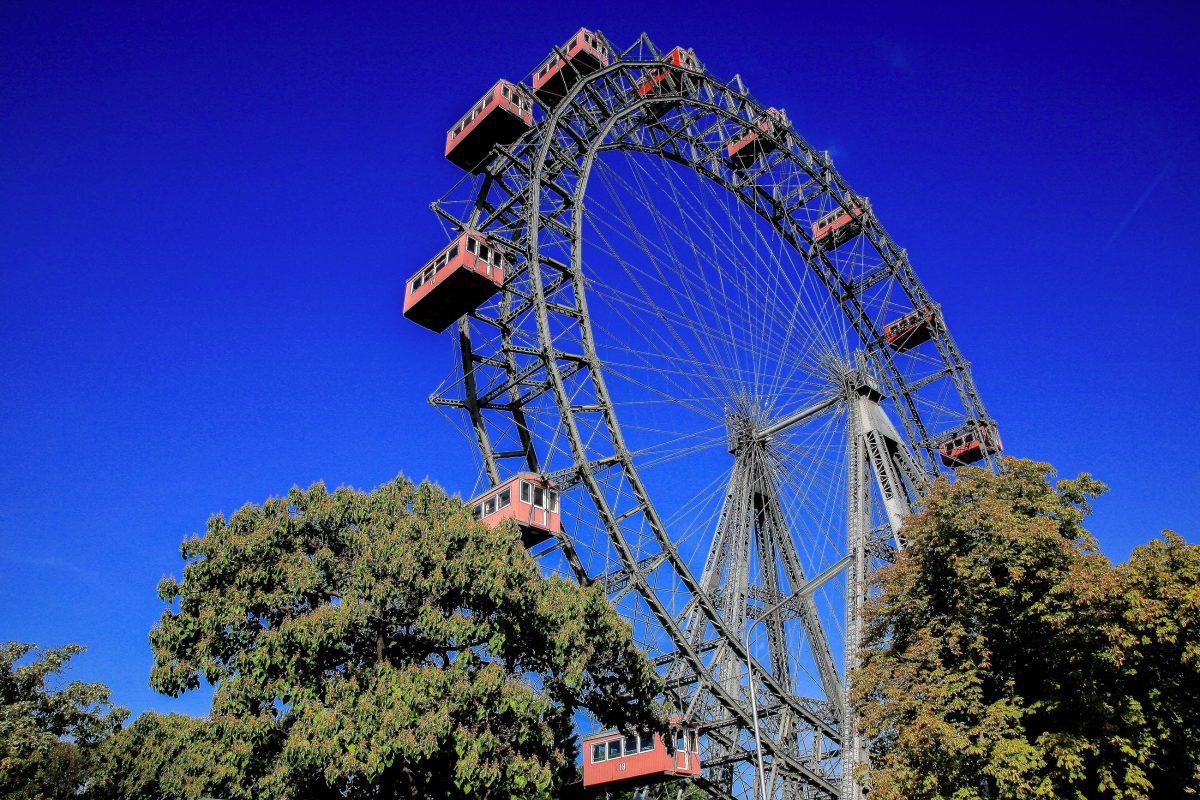
Zu den größten Attraktionen am Rummelplatz gehört ohne Zweifel das berühmte Riesenrad gleich am Eingang zum Wurstelprater. Das Wahrzeichen Wiens ist untrennbar mit der Skyline von Wien verbunden und thront unübersehbar über den Dächern des zweiten Wiener Gemeindebezirks.
BILDER: Riesenrad in Wien
Fotogalerie: Riesenrad in Wien
Zahlen, Daten, Fakten zum Wiener Riesenrad

Das Riesenrad hat einen Gesamtdurchmesser von 200 Fuß (60,96 Meter) und ist an seinem höchsten Punkt 64,75 Meter hoch. Damit war es in seinen Anfangsjahren Ende des 19. Jahrhunderts eines der größten Riesenräder der Welt. Mittlerweile wird dieser Titel vom noch einmal 100 Meter höheren Singapore Flyer in Singapur gehalten, gefolgt vom 30 Meter niedrigeren London Eye in Großbritannien.
Gewaltige 245 Tonnen werden von zwei Motoren angetrieben, die die Waggons mit einer Geschwindigkeit von 2,7km/h im Kreis bewegt. Eine vollständige Umdrehung dauert in etwa viereinhalb Minuten.
Eine Fahrt mit dem Riesenrad dauert jedoch wesentlich länger, da die Waggons immer wieder stoppen, um Passagiere aus- und einsteigen zu lassen. Somit kann die fantastische Aussicht auf den quirligen Prater und das Zentrum von Wien insgesamt zehn bis zwanzig Minuten lang genossen werden.
Events im Wiener Riesenrad

Das Riesenrad ist nicht nur eine der spektakulärsten Aussichtsplattformen, die Wien zu bieten hat, sondern dient auch als Veranstaltungsort verschiedenster Events. Diese reichen von einem romantischen Dinner zu zweit über kleinere private Feiern bis hin zu Pressekonferenzen und Präsentationen von Unternehmen. Für besonderes Ambiente sorgen die beiden Luxuswaggons, der Jubiläumswaggon und der Jugendstilwaggon.
Das Romantic Crystal Dinner findet in der einmaligen Atmosphäre eines von Swarovski gestalteten Waggons statt und beinhaltet neben Champagner-Gutscheinen und einem dreigängigen Menü mit Weinbegleitung auch ein Überraschungsgeschenk von Swarovski. Apropos Romantik: Auf Wunsch kann ein Waggon für einen unvergesslichen Heiratsantrag vorbereitet werden und sogar eine Hochzeit im Wiener Riesenrad ist möglich.
Das Wiener Riesenrad im Film
Als international bekanntes Wahrzeichen diente das Wiener Riesenrad bereits mehrmals als atemberaubende Kulisse oder war Teil spektakulärer Stunts. Bereits im Jahr 1914 drehte eine Zirkusdirektorin auf einem Pferd, das auf dem Dach einer Gondel stand, für einen Film eine Runde mit dem Riesenrad. 35 Jahre später tauchte das Riesenrad in „Der Dritte Mann“ auf und auch im James-Bond-Film „Der Hauch des Todes“ aus dem Jahr 1987 fungierte das Wiener Riesenrad als Kulisse.
Panoramamuseum „Rad der Zeit“
Die Geschichte des Riesenrads kann im „Rad der Zeit“ am Fuß des Riesenrads im Detail nachvollzogen werden. In acht historischen und bereits verschollen geglaubten Waggons wird nicht nur die Vergangenheit des berühmten Wahrzeichens wieder aufgerollt, sondern die Geschichte von Wien bis vor 2000 Jahren zurückverfolgt. Schwerpunkte der Ausstellung sind die Römerzeit, das Mittelalter, die Türkenkriege, Aufklärung und Biedermeier-Zeit, die Weltausstellung im Jahr 1873, das Ende des 19. Jahrhunderts und die Goldenen 1920er-Jahre.
Riesenradplatz, Pratermuseum und Praterdome
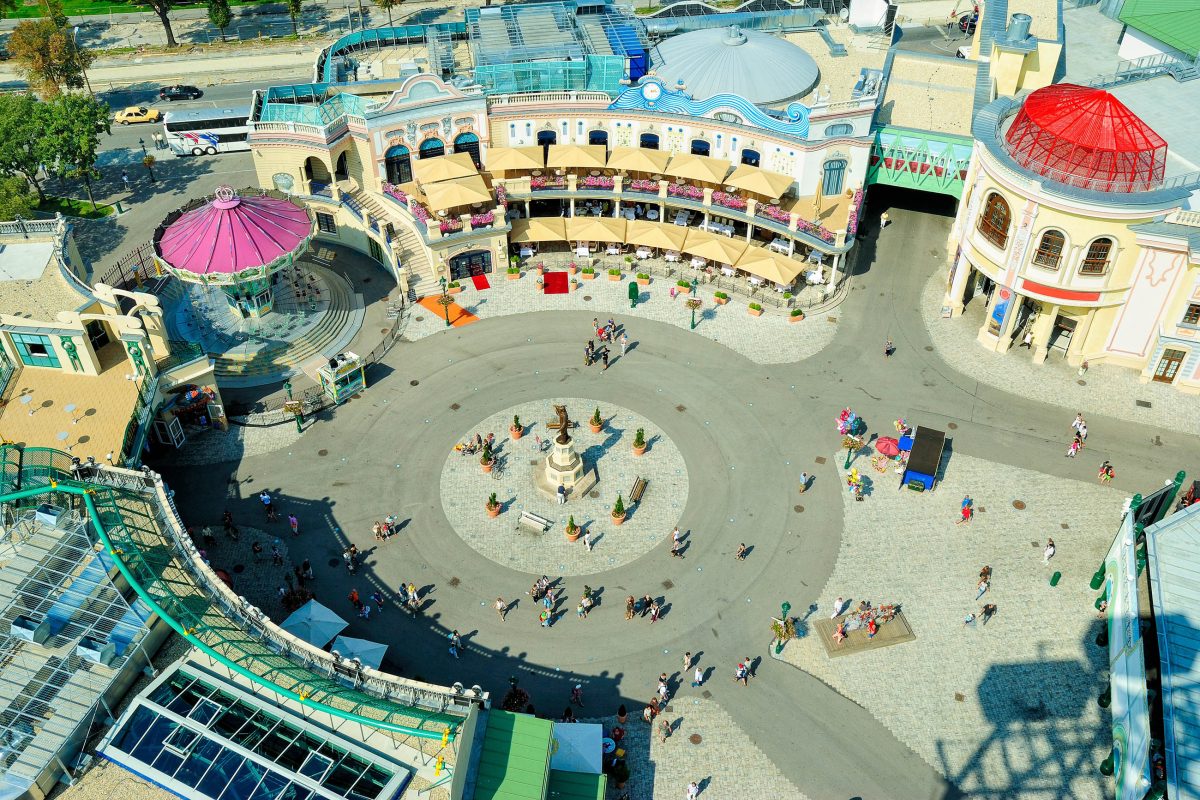
Am Platz vor dem Riesenrad erinnert eine nostalgische Erlebniswelt an den Prater um 1900. Hier befindet sich auch das Pratermuseum, in dem die Entstehungsgeschichte des Wiener Praters im Detail im nachvollzogen werden kann.
Am Riesenradplatz herrscht nicht nur tagsüber Vergnügungsstimmung, denn der Rummel dauert im Praterdome bis in die frühen Morgenstunden an. In Österreichs größter Disco bieten vier Tanzflächen und zwölf Bars Partygästen über 18 Unterhaltung bis zum Abwinken.
Die breit gefächerte Musik von House und Elektro über R’n’B, Soul und Salsa bis hin zu den Hits der 80er und 90er trifft jeden Geschmack. Um Mitternacht werden zwei Tanzflächen Schauplatz einer spektakulären Lasershow.
Kettenkarusell – einst das höchste der Welt

Neben dem Riesenrad die zweite große Hauptattraktion des Wurstelpraters ist das bereits weithin sichtbare Kettenkarussell. Der „Praterturm“ wirbelt seine Fahrgäste mit rund 60km/h im Kreis.
Mit seiner Höhe von 117 Metern war er bis April 2013 das höchste Kettenkarussell der Welt. Im Riesenrad geht es zwar nur auf rund 60 Meter Höhe, dafür kann der Ausblick vom gemütlichen Waggon in aller Ruhe genossen werden.
Adrenalin pur in Wiener Prater

Zahlreiche Attraktionen, wie Space Shot, Turbo Boost oder Bungee Jump sorgen mit extremen Geschwindigkeiten und rasanten Höhenflügen für pures Adrenalin. Bis zu 80km/h erreicht man mit der gewaltigen Schaukel „Schwarze Mamba“ und besonders Mutige starten eine Fahrt mit der Indoor-Achterbahn durch völlige Dunkelheit. Dunkelheit herrscht auch in diversen Geisterbahnen oder im Horror-Haus, die immer für Gänsehaut und Schockmomente gut sind.
Tipp: Auf einer Adventure-Tour durch den Vergnügungspark kann ein Blick hinter die Kulissen der teils hochmodernen Attraktionen geworfen werden. Eine beschaulichere Tour durch den Prater erfolgt mit der nostalgischen Liliput-Bahn, die vom Riesenrad bis zum Ernst Happel Stadion fährt.
Madame Tussauds
Seit 2011 ist auch Madame Tussauds in Wien eingezogen. Das weltweit bekannte Wachsfigurenkabinett ermöglicht Fotos mit rund 70 täuschend echt gestalteten Prominenten. Neben berühmten Österreichern wie das Kaiserpaar Franz und Sisi, Arnold Schwarzenegger, Mozart oder Falco sind auch auch internationale Stars wie Nicole Kidman, Johnny Depp, Angelina Jolie oder Robbie Williams vertreten.
Der „Grüne Prater“ und die Prater Hauptallee

Trotz Touristen, Autobahn und U-Bahn konnte sich der Grüne Prater seinen idyllischen Charakter erhalten und wurde vom deutschen Magazin „Focus“ sogar bereits unter die zehn schönsten Parks der Welt gewählt. Bei schönem Wetter ist auf den weitläufigen Grünflächen einiges los vor allem an der Prater Hauptallee, die vom Praterstern bis zum Lusthaus führt, treffen sich Sportler und Spaziergänger.
Unterwegs im Grünen Prater

Wiesen und Wälder sorgen auf mit teils dichtem Unterholz und einem breit gefächerten Netz aus Wanderwegen für Natur pur mitten in der Stadt. Wo im 18. Jahrhundert Hof und Adel mit Pferd und Wagen flanierte sorgen heute Spielplätze, BMX- und Skate-Parks, Beachvolleyball-Plätze, Liegewiesen, eine Rodelbahn auf der weitläufigen Jesuitenwiese, Loipen und Hundezonen für Spaß und Unterhaltung der modernen Art.
Mehrere Teiche, wie das Mauthnerwasser, das Heustadlwasser oder das Rosenwasser komplettieren die Idylle am Prater. Vor allem am Mauthnerwasser ist die idyllisch Au-Landschaft im Wiener Prater noch völlig naturbelassen.
Prater Hauptallee – die Schlagader des Grünen Praters

Die 4km lange Prater Hauptallee zwischen Praterstern und Lusthaus ist das Zentrum des Grünen Praters. Hier ist vor allem bei Schönwetter einiges los, wenn mehr Einheimische als Touristen die Sonne und das Grün in vollen Zügen genießen.
Auf der autolosen Straße herrscht kaum Verkehrslärm, von der Südost-Tangente am unteren Ende abgesehen, und auch der Lärm vom Wurstelprater ist nur aus der Ferne zu hören. Auf der Hauptallee dominieren Sportler und Spaziergänger, sowie Erholungssuchende, die es sich auf Parkbänken bequem machen, oder Picknick-Decken ausbreiten.
Distanzmarken machen die Straße zum beliebten Treffpunkt für Läufer und Radfahrer und erinnern daran, dass die Prater Hauptallee Teil des berühmten Vienna City Marathons ist.
Tipp: Im Frühjahr und Herbst verwandeln hunderte Kastanienbäume die Prater Hauptallee mit Blüten oder verfärbten Blättern in die größte Kastanienallee Wiens und eine der schönsten Attraktionen, die der grüne Prater zu bieten hat.
Wiener Küche im Wiener Prater
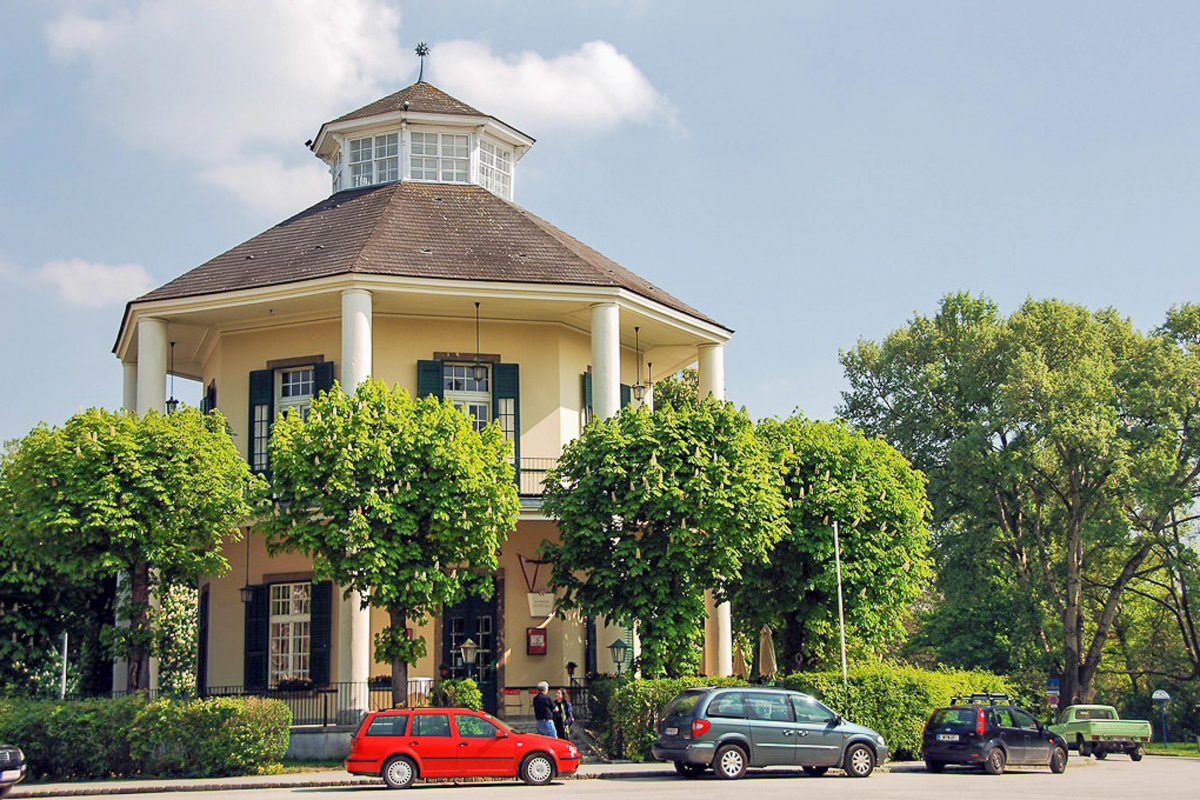
Auch an Gaumenfreuden darf es im Wiener Prater nicht fehlen. Über 50 verschiedene Lokale sorgen vom einfachen Langos-Stand oder Buffett über urige Wirtshäuser bis zu Hauben-Lokalen für das Wohl der Prater-Besucher. Legendär sind vor allem das Schweizerhaus und seine Stelzen, die gehobenere Luftburg mit ihrem idyllischen Gastgarten oder das Hauben-Gasthaus Eisvogel.
Entlang der Prater Hauptallee verwöhnt das Lusthaus mit typischen Wiener Köstlichkeiten. Der ehemalige Jagdpavillon präsentiert sich nach wie vor im kaiserlichen Ambiente und bietet von Frühling bis Herbst gehobene Wiener Küche.
Als kurzer Zwischenstopp für Kaffee und Kuchen bietet sich die Meierei mit Blick auf das Treiben auf der Straße an. Das Alte Jägerhaus, dessen erste urkundliche Erwähnung als ehemaliges Gesinde- und Stallhaus des Kaisers auf 1899 zurückgeht, lockt mit kreativer Küche in gehobener Atmosphäre.
Veranstaltungen im Prater

Vor Weihnachten und zum Jahreswechsel locken mit dem Motto „Der Prater rockt“ Wintermarkt und Silvesterparty zahlreiche Besucher auf den Riesenradplatz im Wurstelprater. Ebenfalls gefeiert wird beim Praterfest am 1. Mai und beim Wiener-Wiesn-Fest im Herbst, welches an das berühmte Oktoberfest in Bayern angelehnt ist.
Zeiss Planetarium Wien
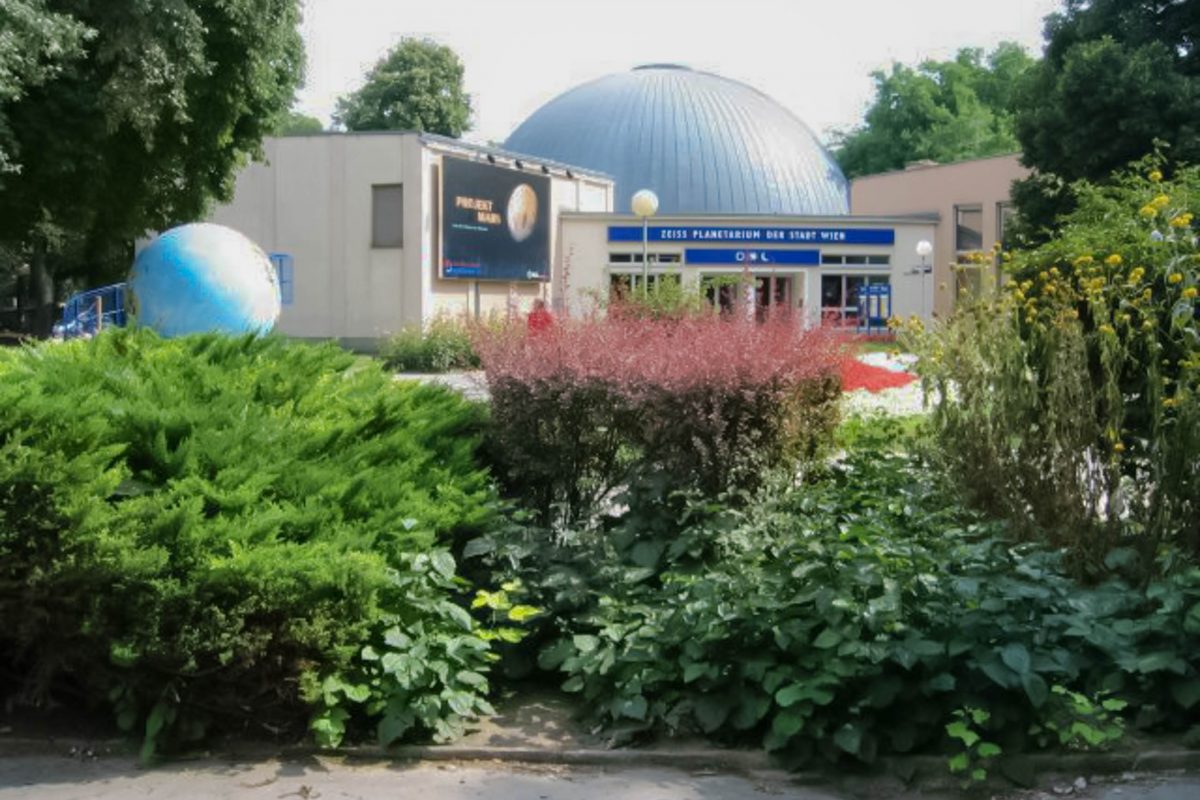
Ganz in der Nähe entführt das Zeiss Planetarium in die Weiten des Universums. Das Planetarium existiert seit 1927 und wurde als weltweit erstes Planetarium außerhalb Deutschlands errichtet. Ursprünglich stand es am Maria-Theresien-Platz zwischen dem Kunst- und Naturhistorischem Museum. Heute zählt es mit seinen Projektoren für den künstlichen Sternenhimmel und einem Kinosaal für 240 Personen zu den modernsten Planetarien der Welt.
Flugsimulator ViennaFlight
ViennaFlight ist der einzige Airbus-Simulator Österreichs. Unter Anleitung von professionellen Piloten drehen Besucher hier einen simulierten Rundflug mit einem Airbus A320, einer Boeing 737 NG oder einem Hubschrauber Bell 206 Jet Ranger.
Entstehung des Wiener Praters
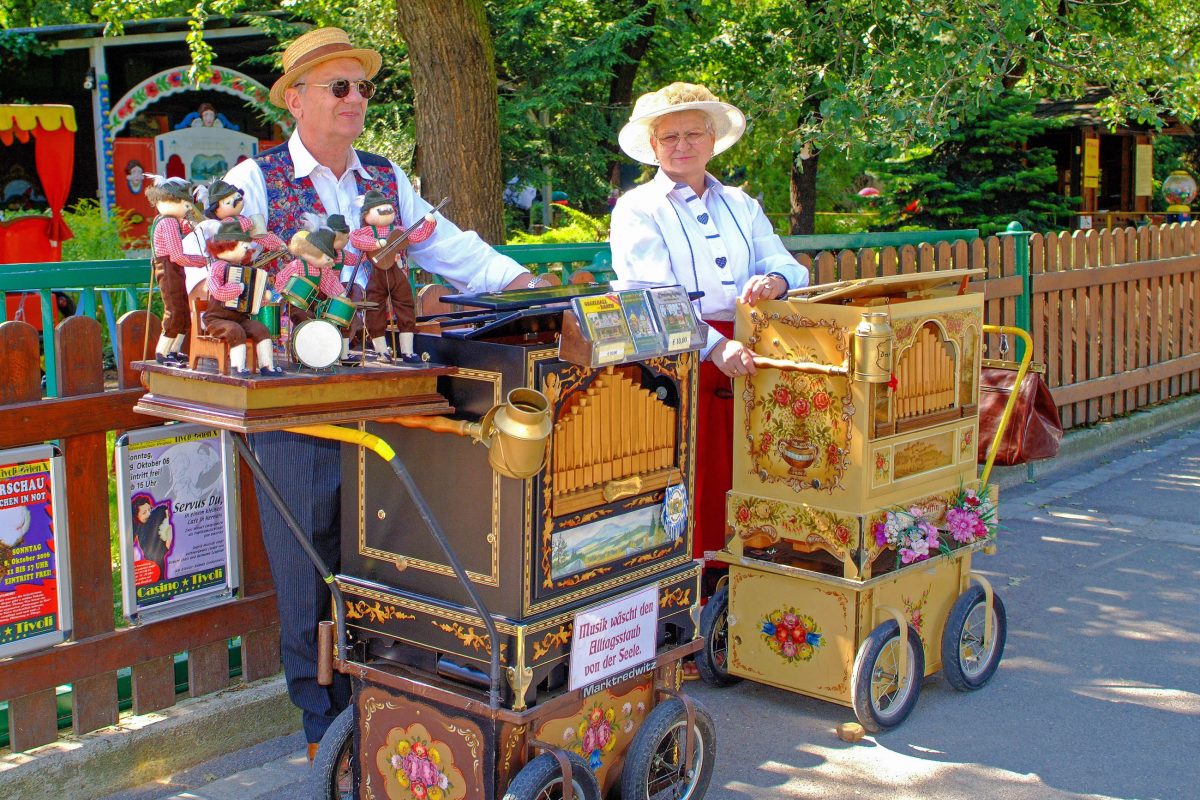
Der heutige Prater war einst unberührtes Auland an der Donau, das im Besitz verschiedener Klöster und Gemeinden war. Zuerst Jagdrevier von Maximilian II. erklärte Joseph II. 1766 die Region zum allgemeinen Erholungsgebiet für die Wiener Stadtbevölkerung.
Damit war der Wurstelprater geboren, denn alsbald tummelten sich nicht nur Würstelstände, sondern auch Cafés, Schaukeln, Kegelbahnen und Ringelspiele auf der damals noch idyllischen Landschaft.
Ende des 19. Jahrhunderts wurden im Zuge der Weltausstellung 1873 immer mehr Gebäude errichtet, unter anderem der Vergnügungspark „Venedig in Wien“ mit dem berühmten Riesenrad. Im Zweiten Weltkrieg wurde der Prater durch Bombenangriffe und einen Großbrand im Jahr 1945 großteils zerstört, mit Hilfe von privaten Geldern jedoch wieder aufgebaut und aufgeforstet.
1976 wurde das Mauthnerwasser als Naturdenkmal unter Schutz gestellt, einer der letzten Reste des ehemaligen Auwaldes und starker Kontrast zum gleichzeitigen Bau der mittlerweile achtspurigen Südost-Tangente.
Die Entstehungsgeschichte des Wiener Praters kann im Detail im Pratermuseum beim Riesenrad nachvollzogen werden.
Geschichte des Riesenrads in Wien
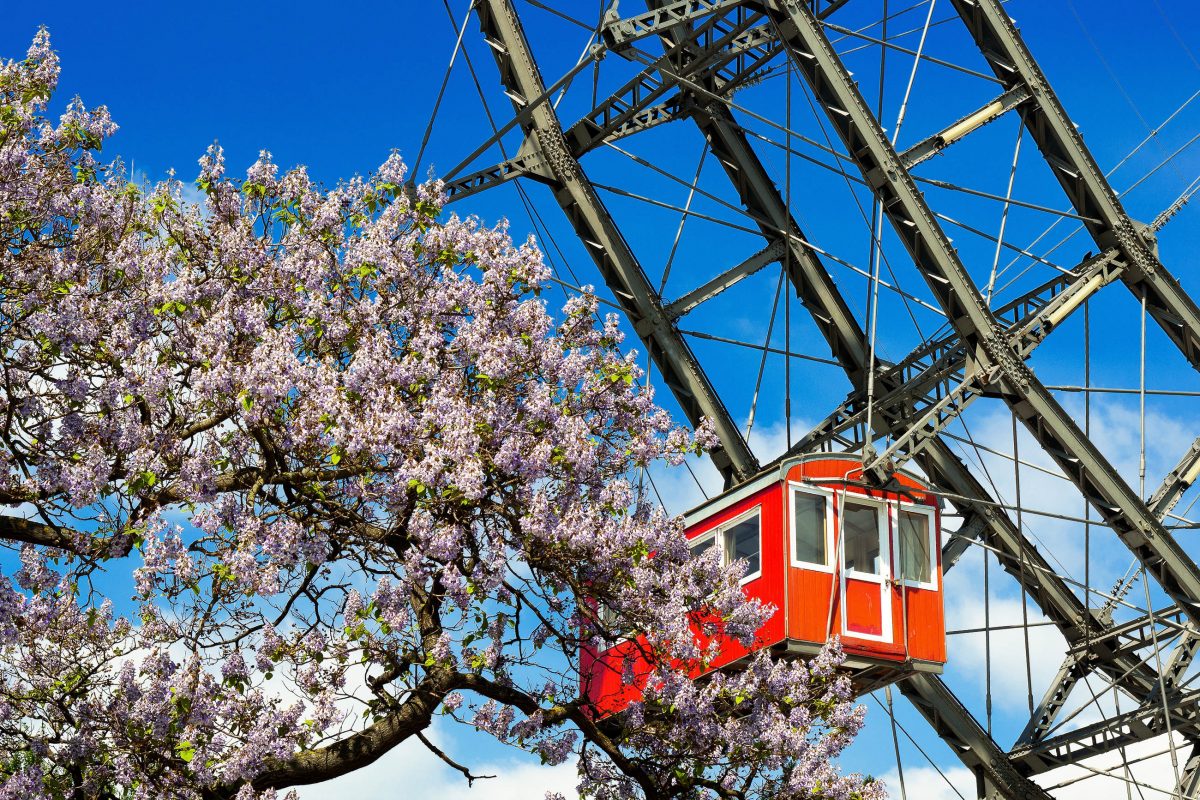
Das Wiener Riesenrad wurde anlässlich des 50jährigen Thronjubiläums von Kaiser Franz Joseph I. errichtet und am 3. Juli 1897, ein Jahr vor dem Jubiläum, feierlich eingeweiht. Zum ersten Mal in Bewegung gesetzt wurde es bereits am 25. Juni davor, um die letzten der 30 Gondeln vom Boden aus montieren zu können. Die eindrucksvolle Konstruktion wurde von den englischen Ingenieuren Walter Basset (der auch Eigentümer des Riesenrades war) und Harry Hitchins errichtet.
Bei der Einweihung war die Praterwiese voller Menschen, eine Fahrt mit dem Riesenrad konnten sich allerdings nur die wenigsten leisten. Der damalige Fahrpreis von acht Gulden entsprach knapp einem Drittel eines Beamten-Monatsgehalts.
Nach der Enteignung von Walter Basset im Ersten Weltkrieg wurde 1916 der Abriss des Riesenrades gerichtlich beschlossen, der aus Geldmangel jedoch nie durchgeführt wurde. 1919 wurde das Riesenrad vom Prager Kaufmann Eduard Steiner erworben, einem Verwandten von Gabor Steiner, auf dessen Grundstück das Riesenrad stand.
1938 wurde das Riesenrad von den Nazis „arisiert“ – also zu ihrem Eigentum erklärt und ein Jahr später unter Denkmalschutz gestellt. 1944 war ein schlimmes Jahr für das Riesenrad und für seine Gründerväter: Das Riesenrad wurde durch Bomben zerstört und brannte vollständig aus, Eduard Steiner wurde im KZ Auschwitz ermordet und Gabor Steiner starb im Exil in Beverly Hills in Hollywood.
Nach dem Zweiten Weltkrieg ging das Riesenrad an drei Erbinnen der Steiner-Familie und man machte sich 1947 an die Reparaturen. Obwohl aus Sicherheitsgründen nur mehr 15 der 30 Waggons eingehängt wurden, wurde das Riesenrad zu einem Symbol des Wiederaufbaus von Wien.
Weiterführende Links:
Offizielle Website des Wiener Praters
Offizielle Website des Wintermarkts im Wiener Prater
Offizielle Website des Riesenrades im Wiener Prater
Offizielle Website des Praterdome
Offizielle Website des Zeiss Planetariums im Wiener Prater
Offizielle Website von ViennaFlight
Offizielle Website des Lusthauses im Wiener Prater
Offizielle Website der Meierei im Wiener Prater
Offizielle Website des Alten Jägerhauses im Wiener Prater





